Having the right tent footprint can make all the difference between a tent you cherish and one you regret.
From providing an extra layer of protection against trapped moisture and sharp stones to improving tent lifespan, a suitable tent footprint is an integral part of a pleasant camping trip experience.
Whether you are setting out for a short overnight trip or planning on exploring the great outdoors for days or weeks at a time, understanding what tent footprints are and whether you really need one is essential.
In this blog post, we’ll cover all the ins and outs of tent footprints and help you decide whether or not you need a footprint for your tent. We’ll also go through the best footprint materials, introduce the top store-bought picks, and show how to save bucks by making your own tent footprint.
What is a tent footprint?
A tent footprint is essentially a custom-sized tarp made from a tougher thread of the material than the rest of your tent, called a denier; it serves as an extra layer of protection between the tent floor and the ground below.
Adding this extra layer helps defend against rocks, dirt, roots, or any other potentially damaging elements from making their way through to the tent floor and causing rips or tears.
Tent footprint, also known as ground cloth or groundsheet, prevents moisture from seeping in and ensures heat insulation to keep the tent comfortable during chillier nights.
Overall, a tent footprint can extend your tent’s lifespan and save you money in the long run.
Why would you need a tent footprint
Today, the great majority of tents on the market have reinforced, extremely waterproof flooring made of nylon, which naturally protects tent floors against seeps and scratches.
Still, there are some reasons why supporting your floor with a footprint is worth it:
Extended lifespan
It’s all about protection from wear and tear – sharp and corrosive objects from the ground, like sand, grit, hard soil, or roots.
The tent floor inherently goes through a lot of abuse over time, and it might quickly develop holes and bruises if not guarded well by a ground cloth. And changing the tent footprints is obviously much cheaper than buying a new tent.
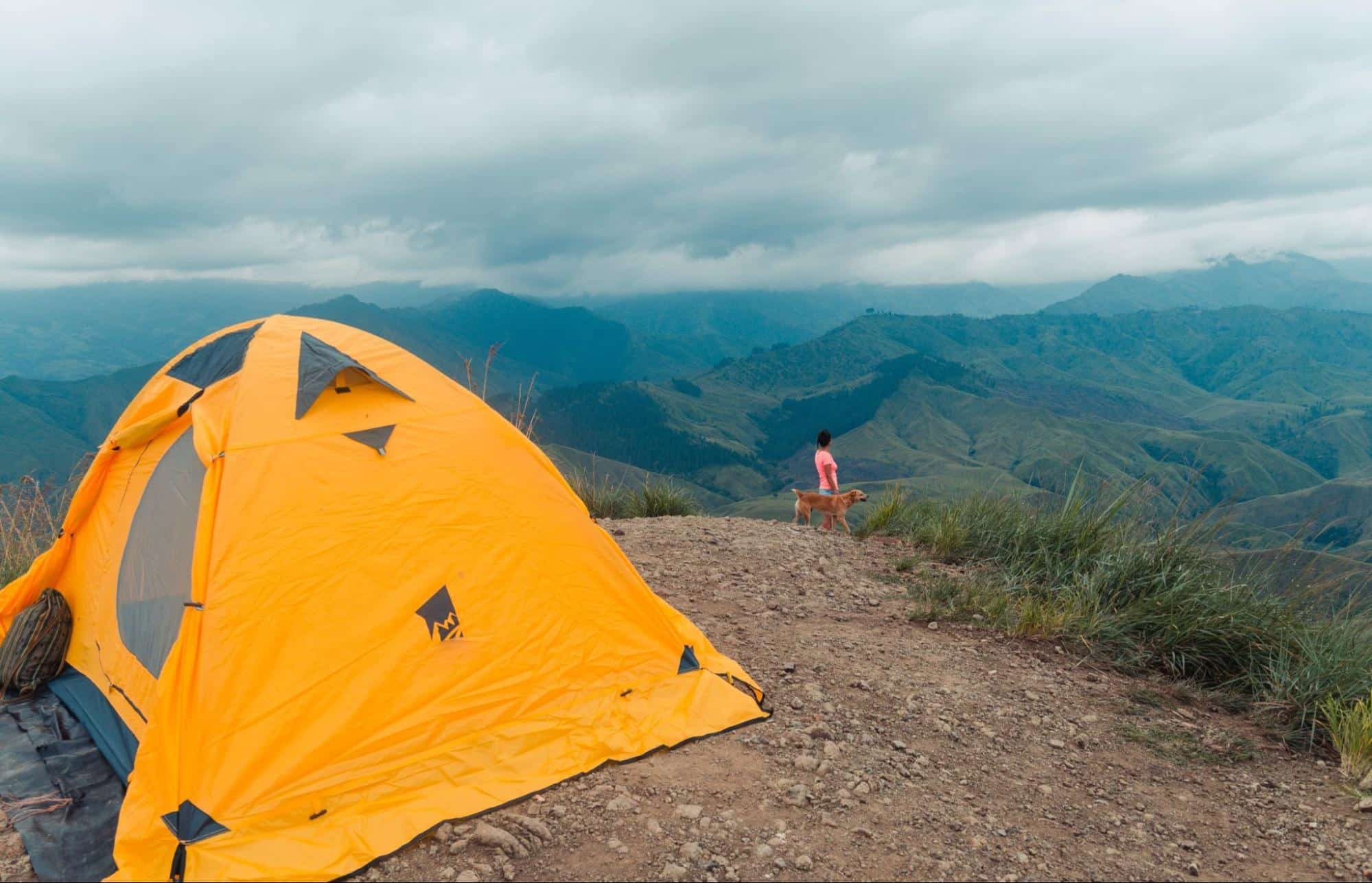
Extra insulation
The ground temperature has all the influence on your body heat. Especially in cold weather, thick sleeping bags, pads, and ground cloths are necessary for your cosy night’s sleep.
We don’t say a tent footprint will be the game-changer in your tent’s temperature, but at least an added half a degree will surely be there.
Increased waterproofing
Especially if you haven’t re-waterproofed your tent and have been using it for quite a while – chances are some unnoticed little holes have appeared. In this case, a tent footprint can be the one to save you and your camping gear from soaking.
If you somehow end up having a hole in your tent floor, you can save it quite easily. You can do it with the Tear-Aid Fabric Repair Kit, which is suitable for repairing even the most rigid materials.
Alternatively, you can try patching the hole with the Gear Aid Tenacious Tape. It’s a solid, water-resistant tape perfect for fixing camping gear on a budget.
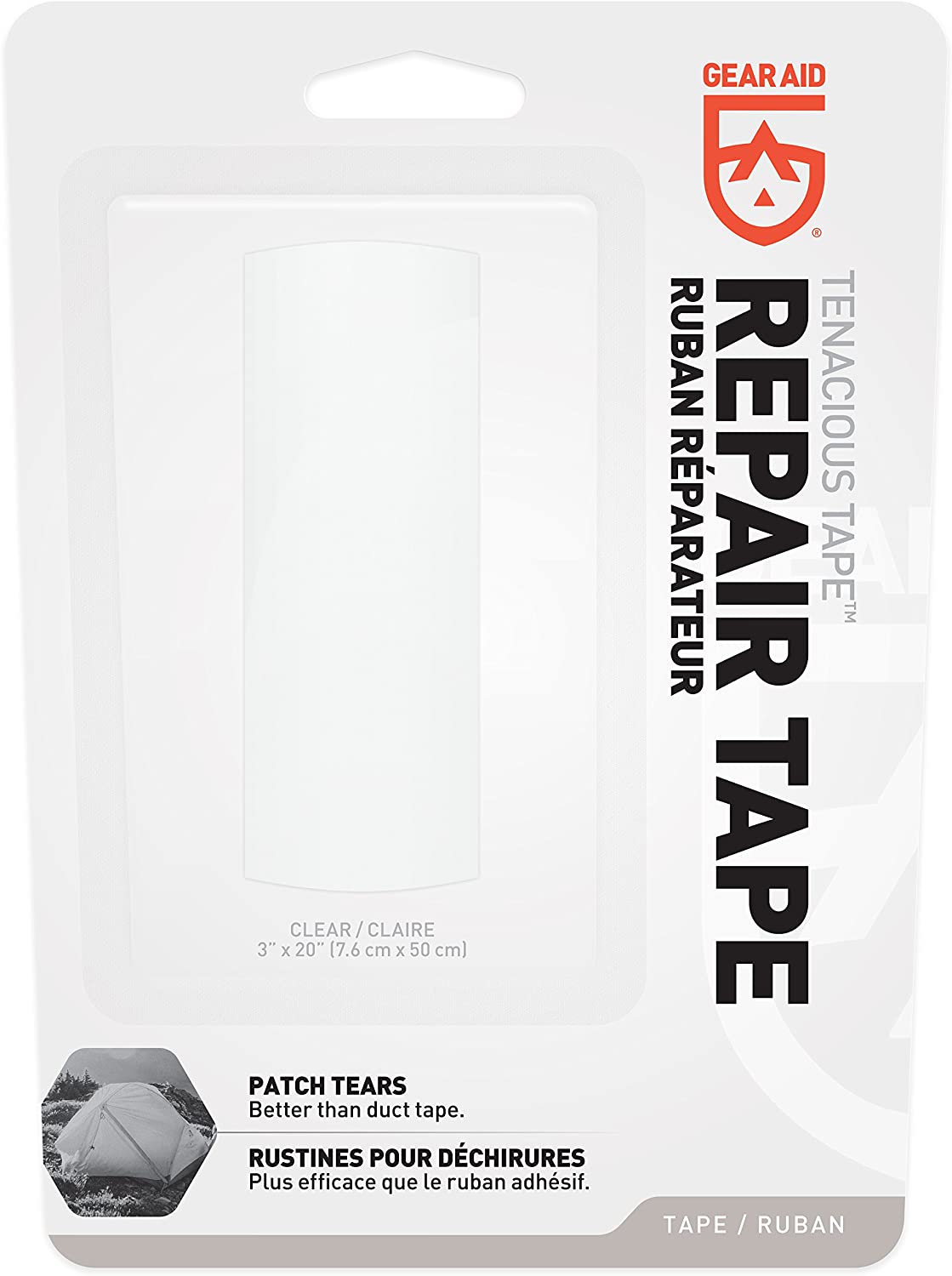
Multi-purpose
You may use tent footprints for more than just safeguarding your tent’s floor. Your footprint, for instance, may be used as a picnic blanket, a station for organizing goods, a rain cover, additional protection from the wind, and more.
Helps to locate a tent spot
While the camp spot looks just awesome at first sight, thoughts alter when it’s time to pitch a tent. A tent footprint can be a quick and convenient way to test out the place – lay it out on the ground, lie down, and feel the base. Is it flat enough?
Why you would not need a tent footprint
Got it – benefits are clear. Now, in what cases you might not bring a tent footprint along?
Plus weight, minus space
Even though there are some really lightweight options, they still put extra pounds and inches on your shoulders. The lightest polycyro footprint weighs between one and two ounces.
Tyvek footprints are around 2–5 ounces in weight. Custom footprints by manufacturers often weigh 6-8 ounces. It’s not at all problematic if you’re a car camper, though it might be deal-breaking for backpackers aiming for ultralight gear.
Cost
Most often, tents have dedicated footprints right for them. Some manufacturers don’t include them in the package, so you need to spend an extra $50 on separate footprints. If that sounds OK, we don’t see why you shouldn’t get this full combination.
But if you don’t feel like spending extra bucks on, most likely, not the cheapest tent, then a) rethink other aspects we list there; maybe the tent footprint isn’t necessary for your camping style at all?; b) build your DIY footprint easily.
Your tent is just enough
Check the denier (fabric thickness) of your tent. If it’s made of 30 deniers or higher, it’s solid enough not to over-worry about damaging your tent floor.
But if it’s 20 or lower, you better get a footprint. The more ultralight your tent, the thinner the tent floor. Some backpacking tents can come with floors as slim as 7 deniers.
You’re camping on smooth ground
Think about the destinations you usually go to. If you’re camping in places where soft grass or sand covers the ground, you’re not at high risk of damaging your tent floor.
But if your camping spots lie somewhere in the woods or mountains where rocks, twigs, and roots are inherent, better be safe than sorry and grab a footprint with you.
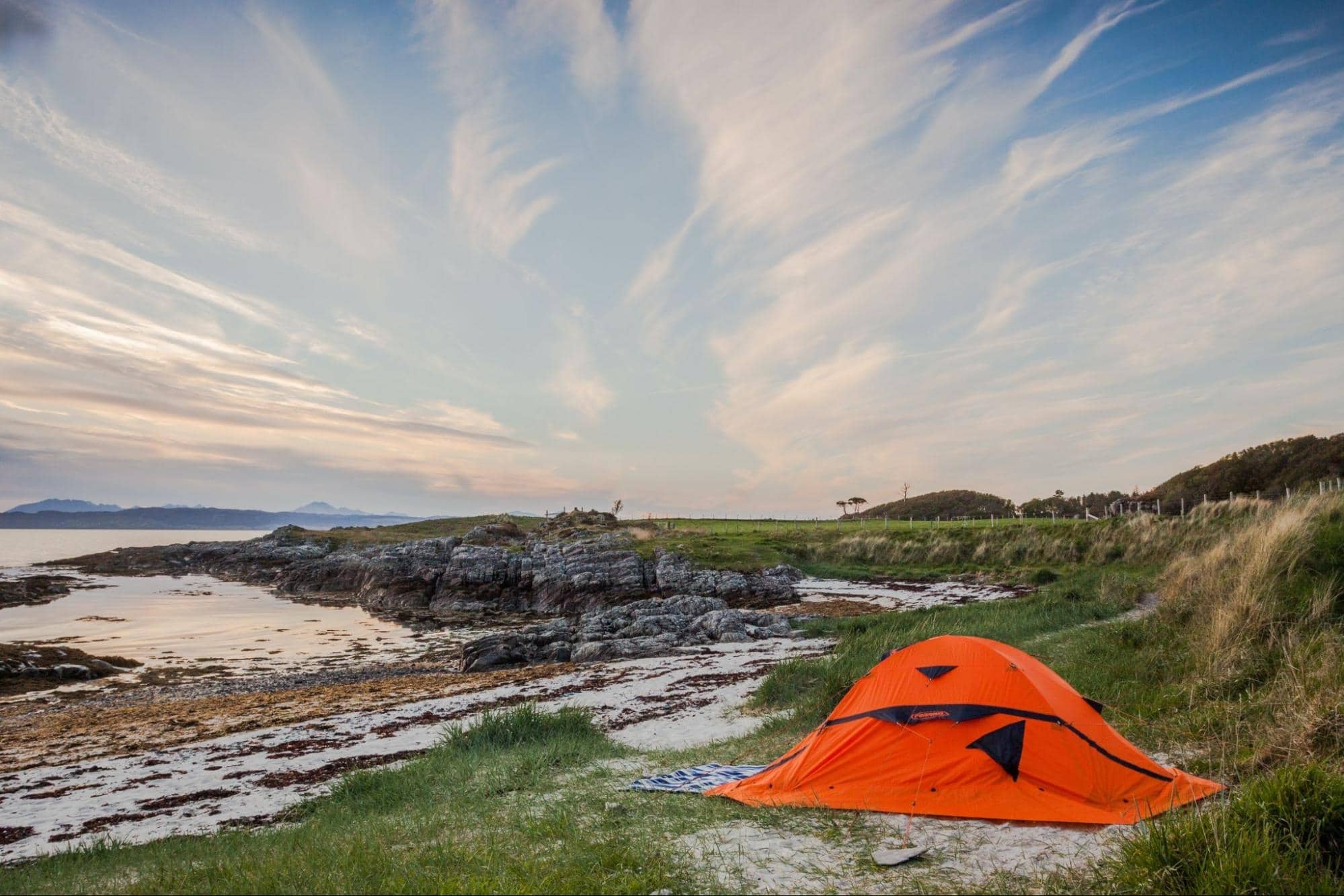
So, what’s the conclusion?
If you’re an occasional camper going to spots with soft terrains, you can live without a tent footprint just fine.
But if (car) camping is among your plans quite often and weight and space aren’t a game-changer, bringing a tent footprint – either store-bought or DYI – won’t ever make you regret it.
Most tent footprints are designed to match a specific tent model. So if you don’t trust your DYI skills or simply don’t want to spend time crafting your tent footprint, instead aim for a ready-to-use, perfect-matching option from the manufacturer.
All in all, while store-bought solutions will surely fit your tent’s model, they’re also more expensive and often heavier than homemade alternatives.
How big is your tent footprint?
Don’t get yourself tricked by the idea of a tent footprint being the same or larger than your tent floor.
Actually, it should be around 2 inches smaller than the outline of your tent; otherwise, the water pool might occur between your tent floor and the footprint if it rains. Even worse – if you have a hole in your tent floor or failing seam tape, this pool will soak through the fabric of the tent floor.
Tent footprint materials
Now, let’s look at some most popular materials tent footprints are made of; and how each of them is unique.
PU-coated nylon
Many tent manufacturers turn to PU-coated nylon for this task; for a good reason. It’s made by coating nylon with polyurethane.
They’re highly water-resilient, lightweight, and durable. The PU-coated layers of the material add superior protection from the wear and tear of the terrain.
Footprints made of PU-coated nylon generally weigh 1.9 ounces per square yard. For small 2-person tents, the entire footprint typically weighs between 6-8 ounces.
You can buy PU-coated nylon-made footprints for $30-$50 (take a look at this Geertop ultralight waterproof footprint) or save costs by home-making one for up to $20.

Tyvek
Know that white paper-like material used to cover houses during construction? Meet Tyvek.
It’s an inexpensive, waterproof, almost unbreakable yet rather light fabric that’s even better at resisting wear and tear than many alternatives.
Tyvek weighs approx 1.85 ounces per square yard, so a small 2-person tent’s footprint would weigh 2-5 ounces. Although it might be a little heavy to pack, you can just wrap it up and tighten it on the top of your backpack with the exterior straps.
If you’re looking to save costs, let us tell you a secret – you can find scraps of Tyvek lying around construction sites. Sure, you can also purchase it for around $20 (check this Relk ultralight Tyvek ground cloth), or buy this material by a yard and make your own footprint at no more than $10.

Polycryo
Polycryo, or a window wrap, provides an alternative tent footprint option with its shatter-resistant plastic composition. It’s the same material used to insulate windows for winter.
Polycryo is lightweight enough that it doesn’t add extra bulk or weight to your tent setup, and the non-porous materials are excellent for tent footprint protection on hard ground surfaces like sand and stone.
The downside, however, is that it is the least durable fabric on the list.
Polycryo weighs around 0.55 ounces per square yard, making it no more than 1-2 ounces-weighting footprint for a small 2-person tent. It’s the cheapest option – this pre-made Six Moon Designs small-sized polycryo footprint costs around $17.
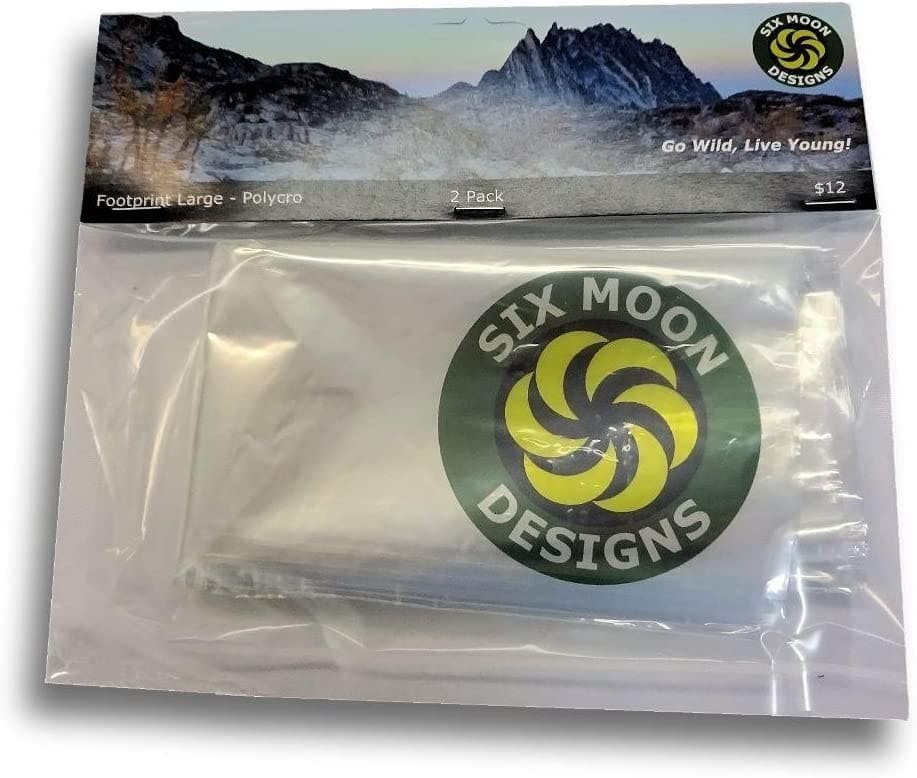
You can also buy a package of window wrap – like a Duck Shrink window insulation kit – to make several footprints on your one.
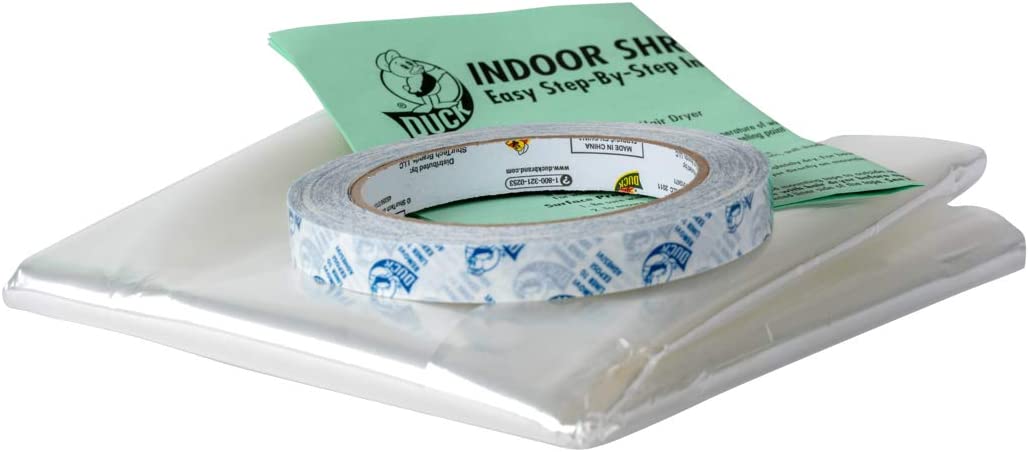
Poly tarp
These are typical utility tarps that you’d use to cover your car or a bike kept outside.
Poly tarps are made from tightly braided together polyethylene strands. These finished tarps are strong, water-resistant, and, most importantly, come at an affordable price.
Any hardware store will have poly tarps that you can purchase, cut to size, and use as a functional footprint. This is a superb footprint option for car campers who don’t mind the weight or size of their belongings.
The weight of a 6 × 8 foot poly tarp is about 10 ounces. They are between $5 and $10. Most include grommets, so you may secure them with a stake.We’ve tried this Foremost Tarp multi-purpose poly tarp.

Dyneema
Dyneema, a fabric made from polyethylene, stands out from the rest with its ultra-durability and extraordinary rigidness (just picture it – it’s times stronger than steel and used in fields like military and aviation).
But it also stands out with its price, not in the best way, though. A factory-made footprint costs around $100-$200, while a yard of fabric for a DIY footprint is approx $32 per yard.
One square yard of Dyneema weighs 1 ounce, so a footprint for a one-person tent would be somewhere around 2-4 ounces.
How to make a DIY tent footprint?
Tent footprints should either be bought separately or come already packed with a tent, at the same price.
- Measure the size of your tent floor. Pitch your tent on a safe, soft and flat ground where it could stand still without damages. If there’s enough space, indoors would be an ideal place. Do the measurements before you buy the material to not to buy too much or too less.
- Subtract 2 inches from all of its sizes to get the right size. Just like we said – you want to have a tent footprint 1-2 inches smaller than your tent floor (in other words, 1-2 inches from each tent edge) to dodge water pools and thus soak yourself and your gear in the water eventually.
- Get a fabric for your tent footprint. You should aim for a footprint made of one piece, without any seams. Choose the right tent footprint material for you and buy enough.
Unless your tent is super big and it’s not possible to have a one-piece footprint, you’ll have to do some sewing and seam sealing, either by hand or with a sewing machine.
All the materials listed above can be sewn, except polycryo. If you want a polycryo footprint for a bigger tent, tape two pieces with duck tape or gorilla tape.
- Make sure the material is laying flat, mark it with a marker, and do the cutting. If you have problems with sizing, you can put your tent on the material to check the size.
How to use a tent footprint?
- Pick a spot. Get rid of the sticks, twigs, and rocks to make it as smooth as possible; then, place a footprint on the ground.
- Pitch your tent. Set it up on your tent footprint. Secure the tent with stakes and guylines if needed.
- Fine-tune. Make sure you’ve pegged all four tent corners correctly onto the footprint; and that the footprint is stable, centered, and fully covered.
If it’s windy and your footprint doesn’t want to lay still while setting up your tent, put some stones, sticks, or other heavier items to support it. do all the pitch first and slide the footprint to the inner tent afterward.
Bottom line
Tent footprints are essential camping add-ons that add an extra layer of protection and prolong your tent’s lifespan. The type of tent footprint to choose should rely on your tent size, the terrain you’re camping on, and how deep you want to dig into your pockets.
Remember that you don’t need to break the bank on an excellent tent footprint; in fact, you can make just the right one at home if you have some time on your hands.
So, explore away, evaluate all the pros and cons, and let the tent footprints guard your tent and gear if your camp style requires it.
You might also be interested in: